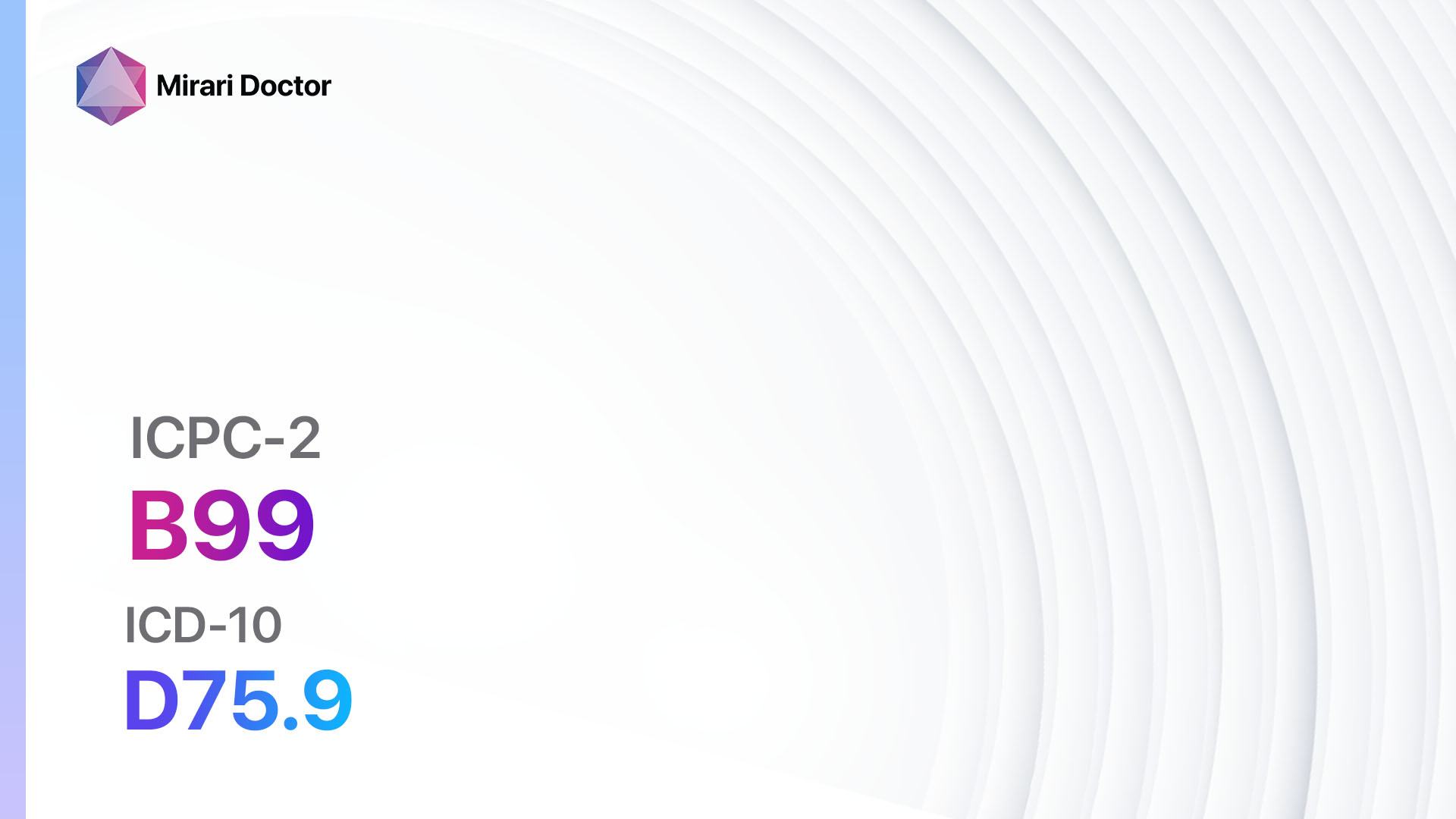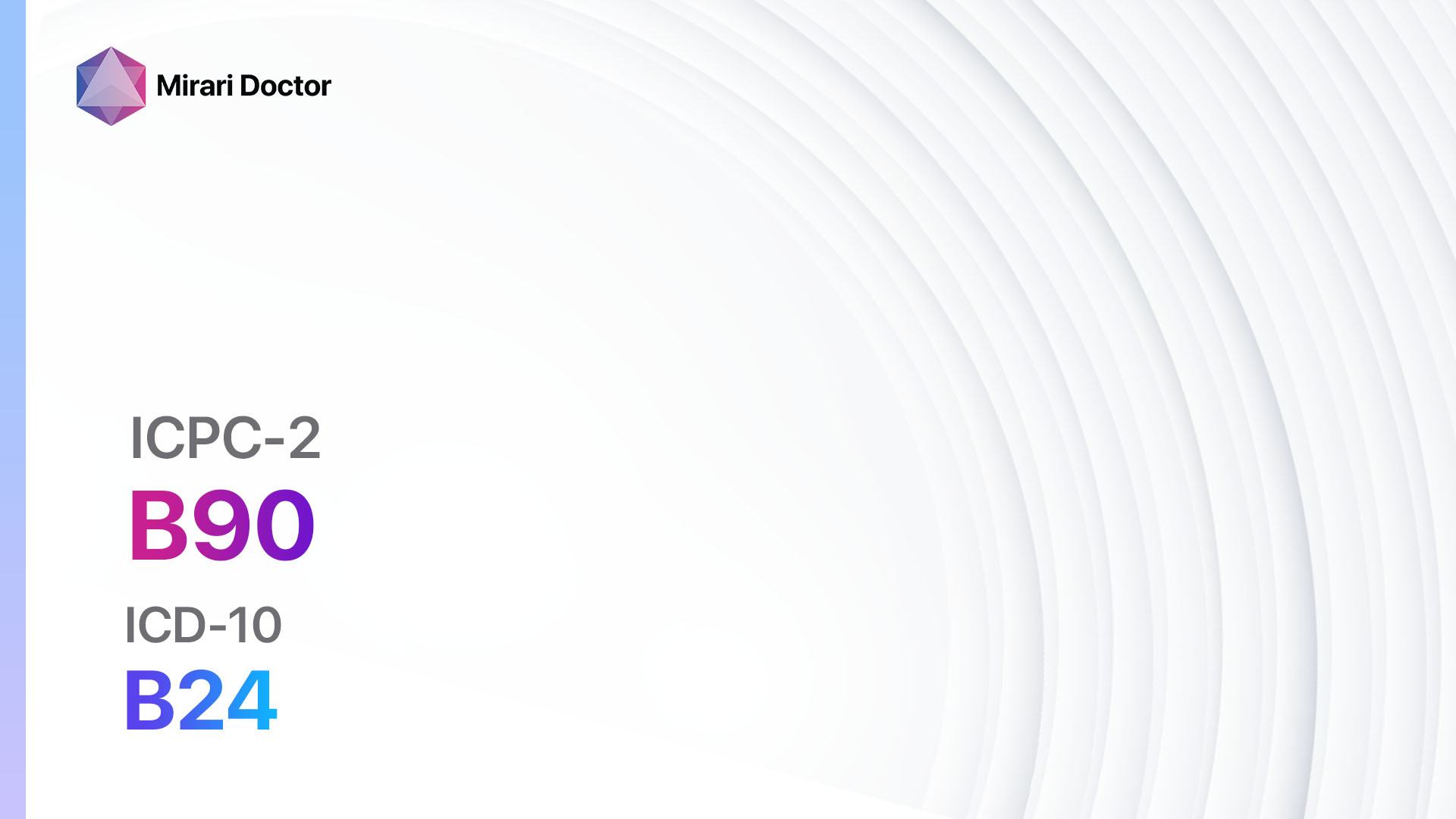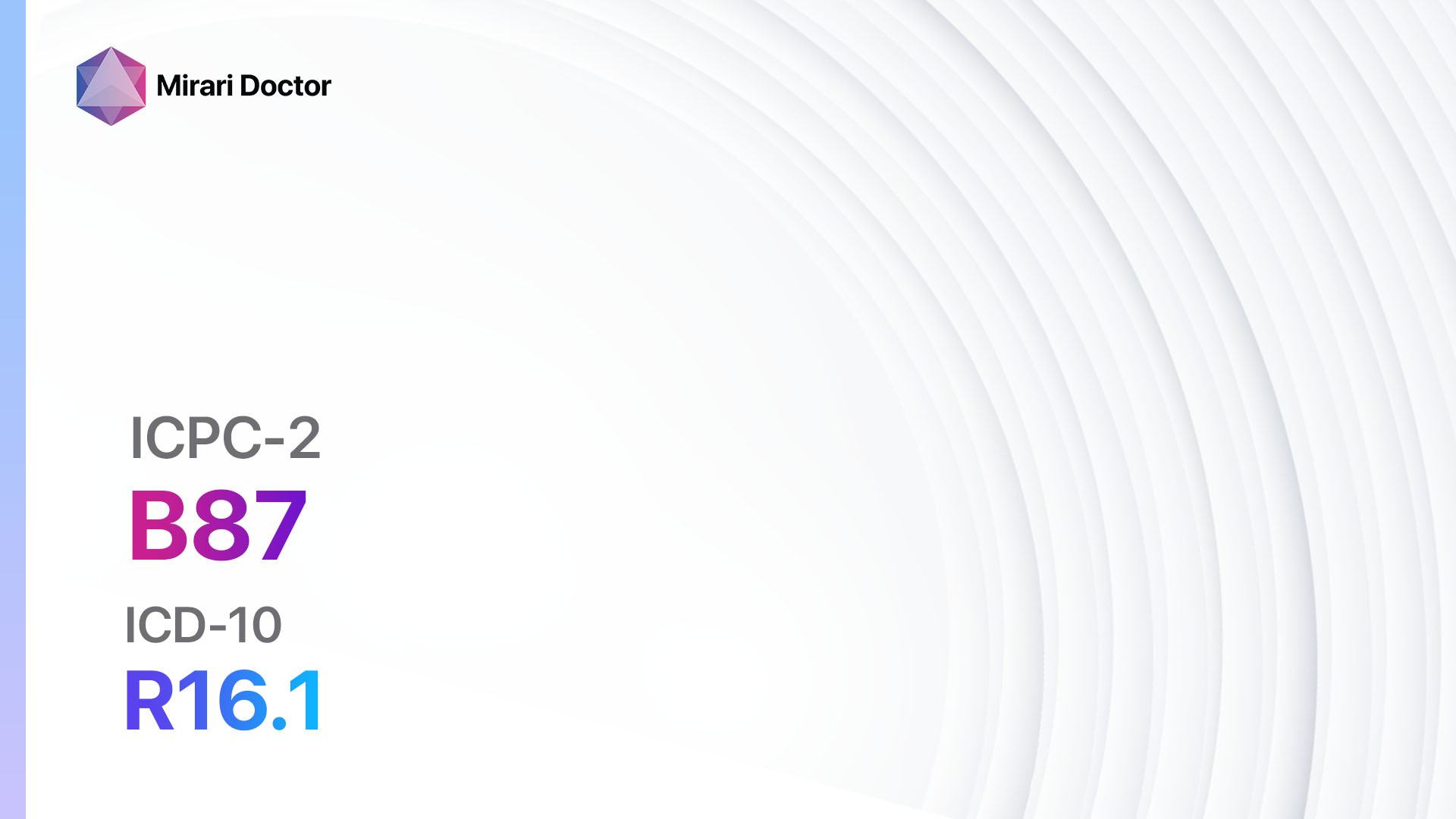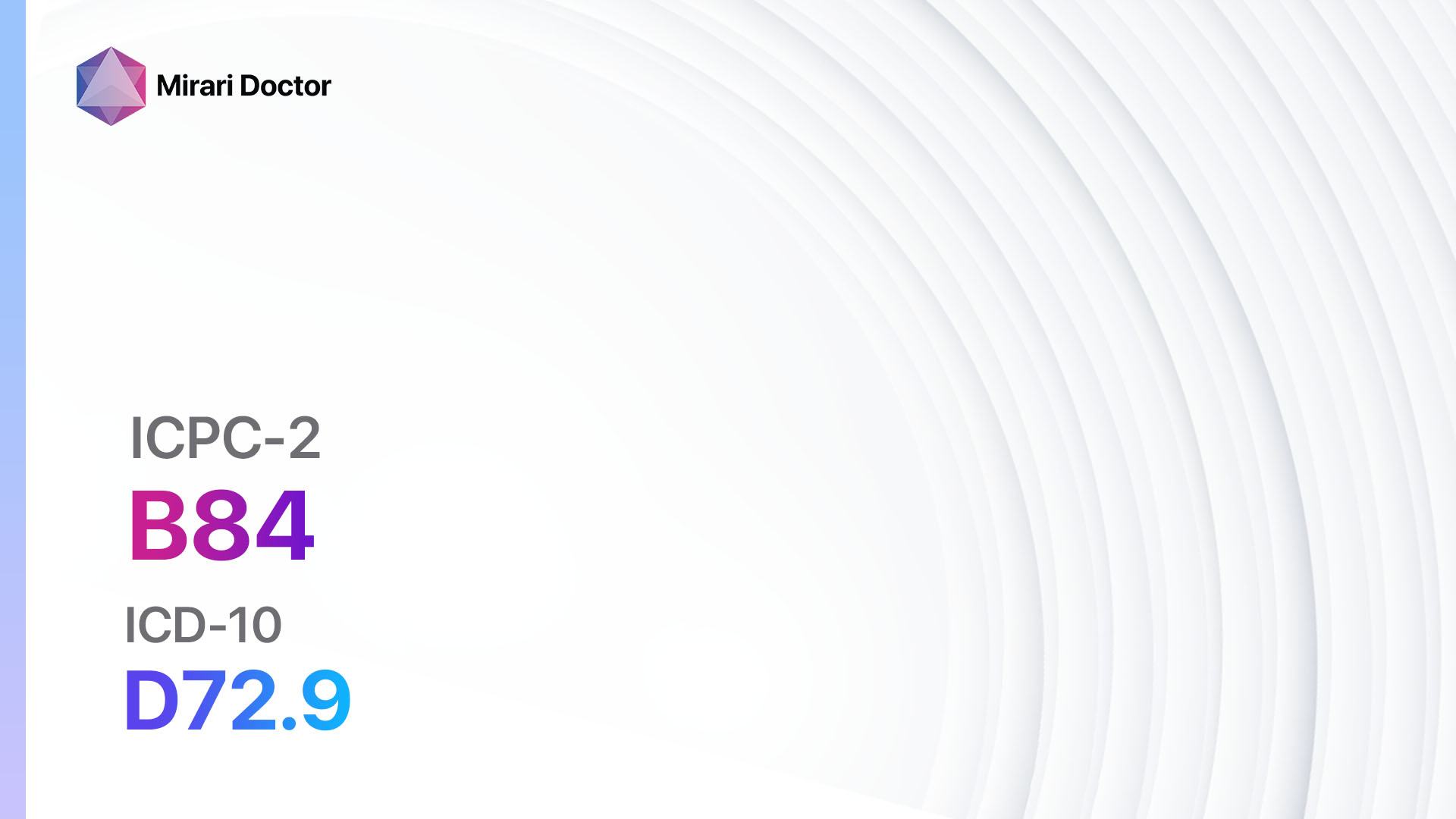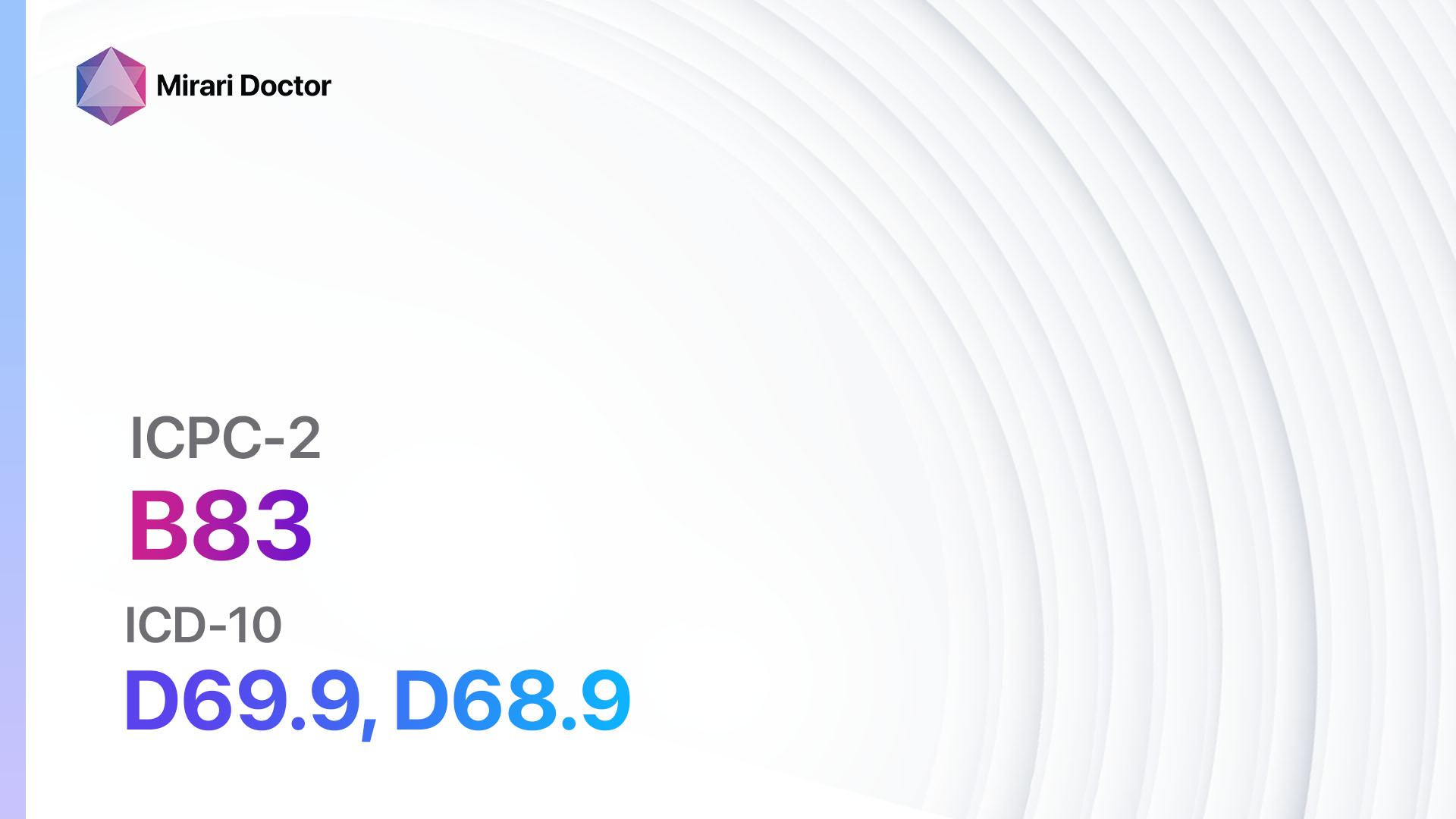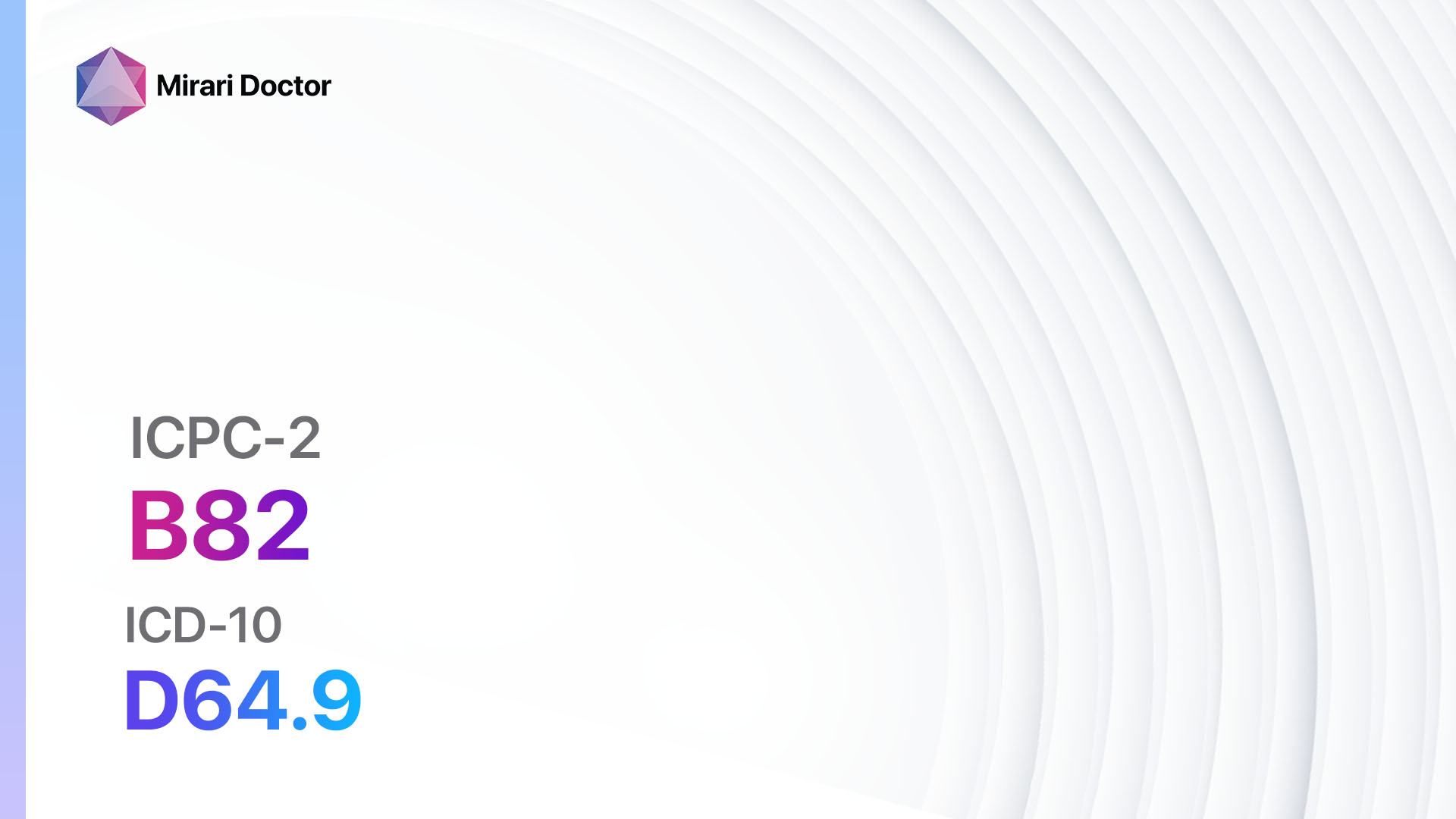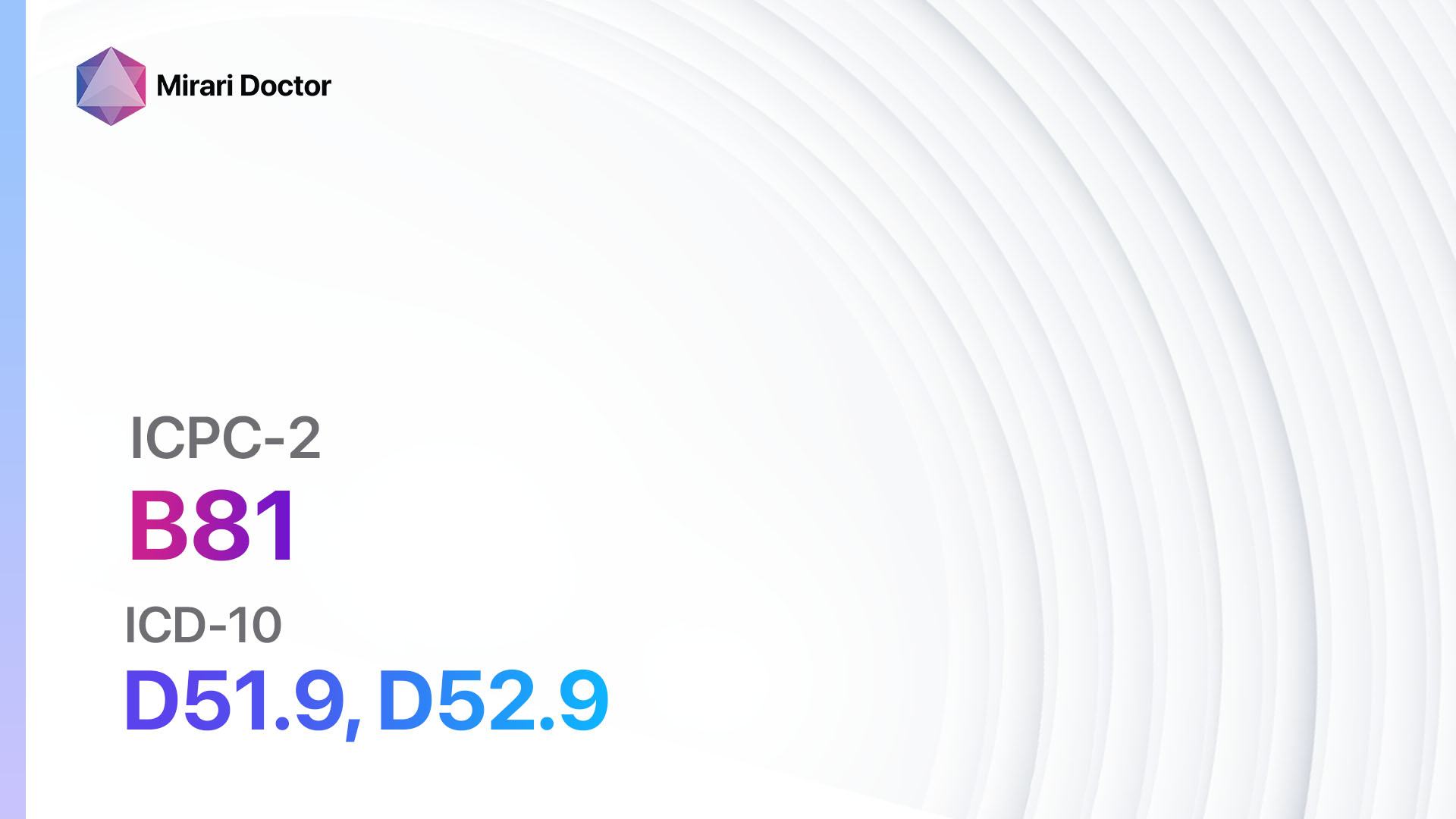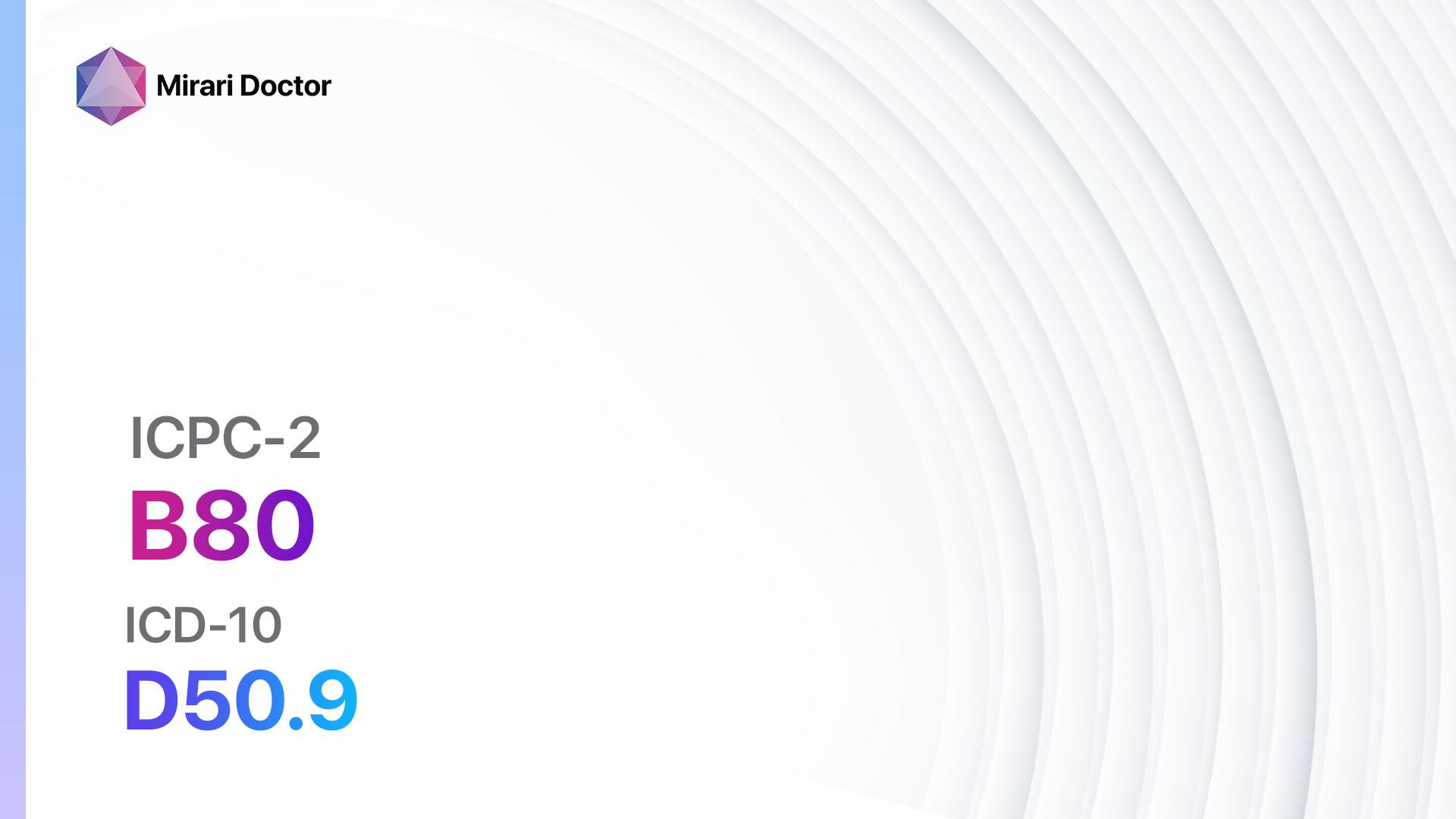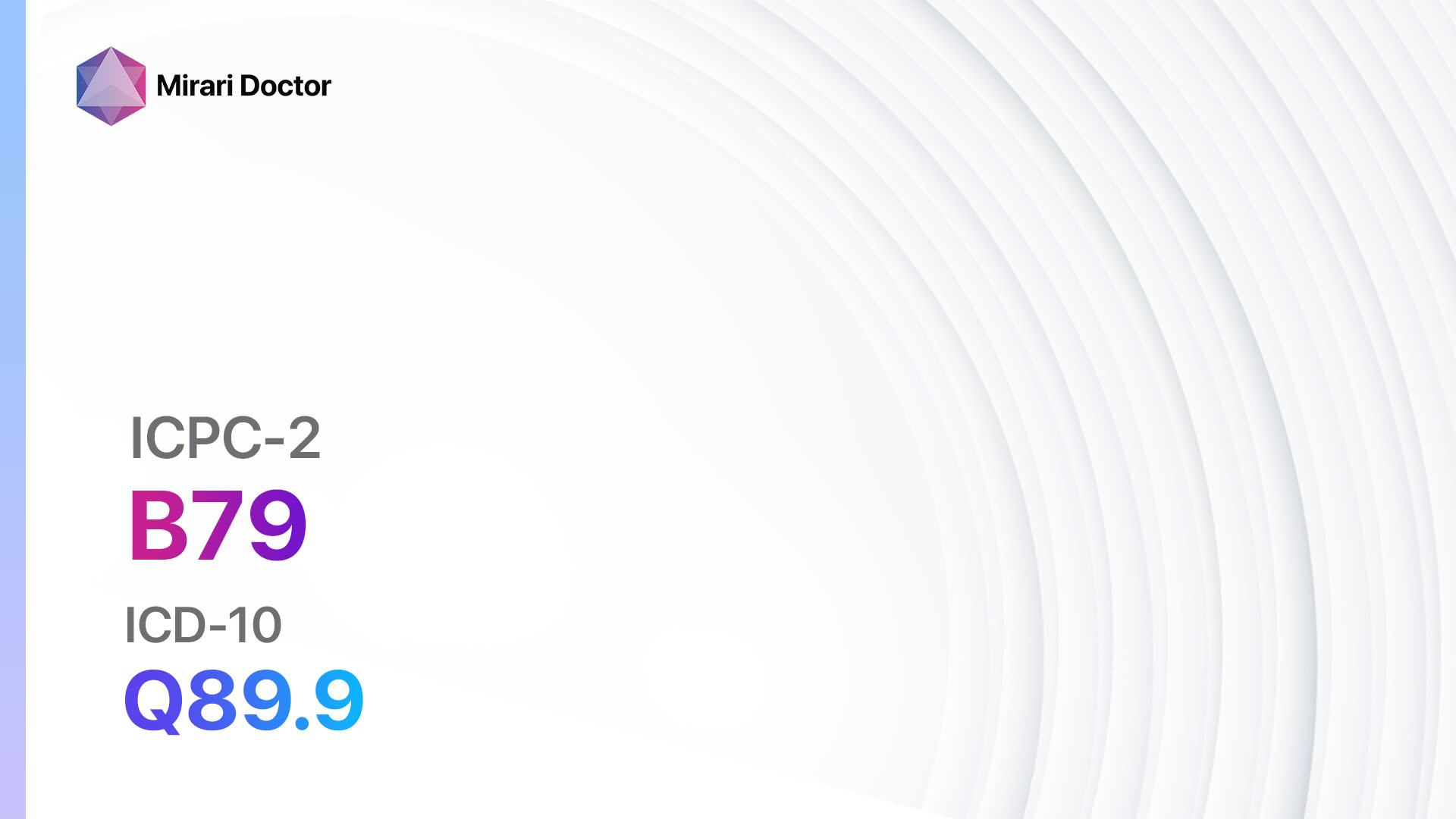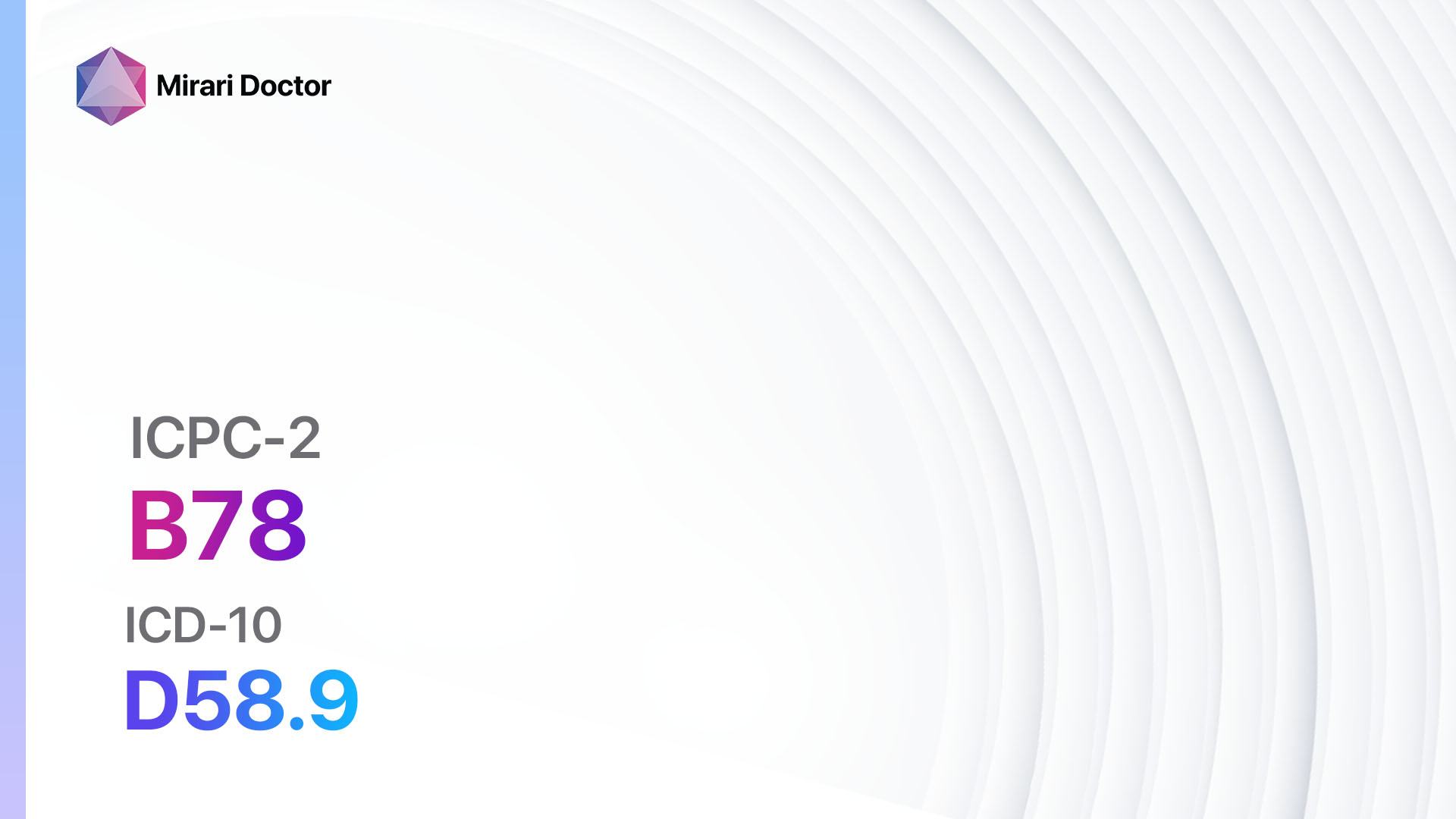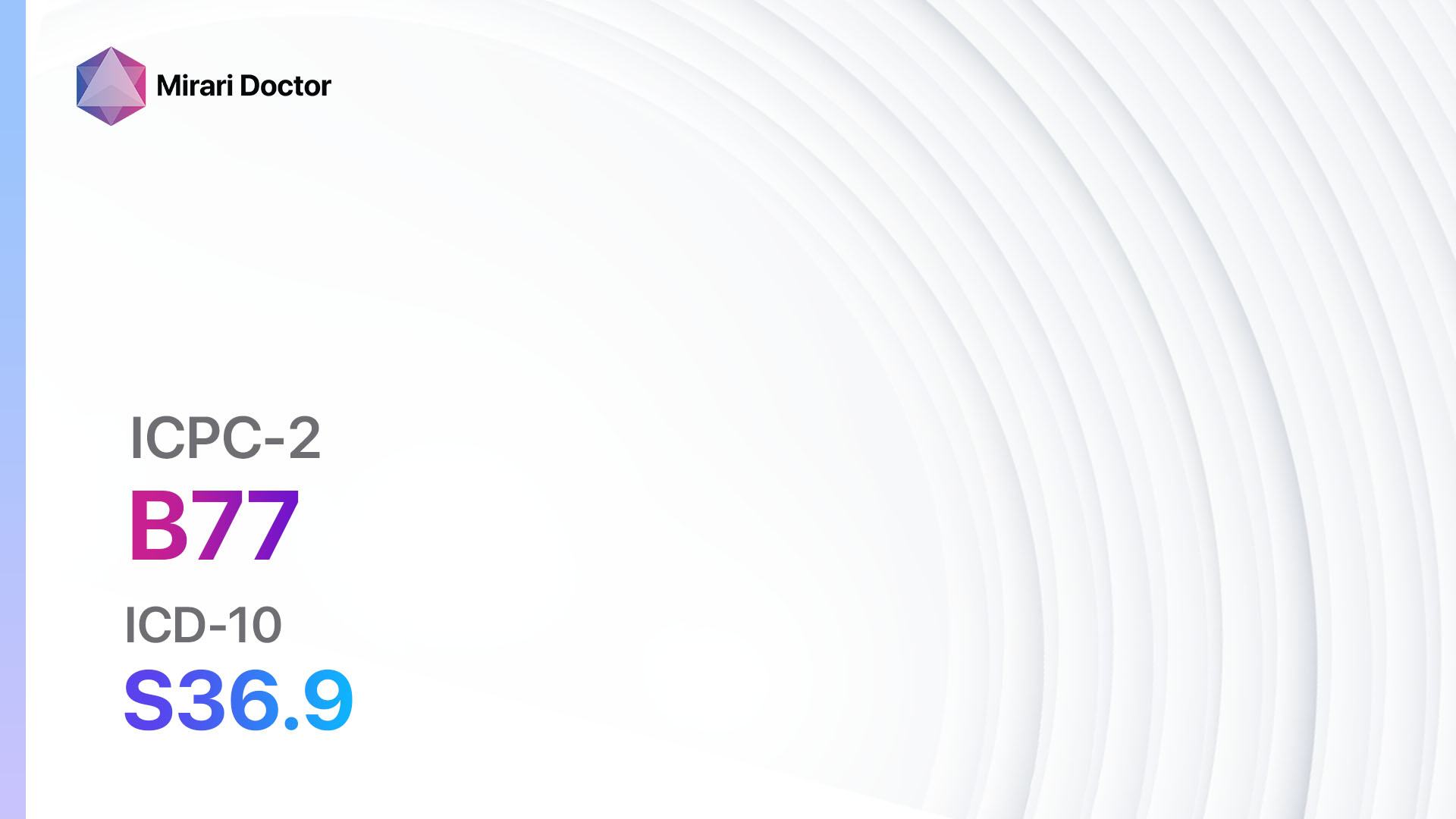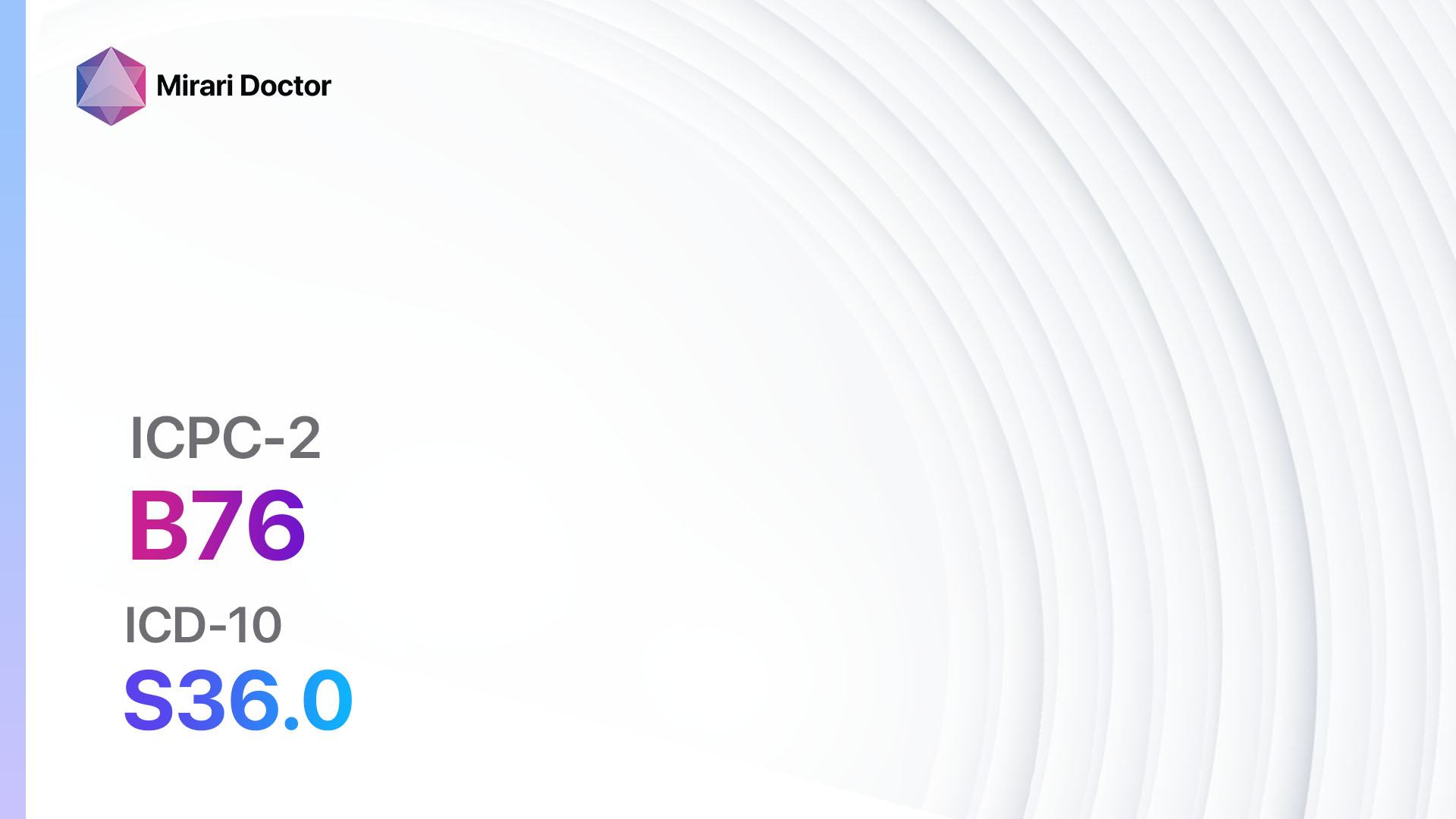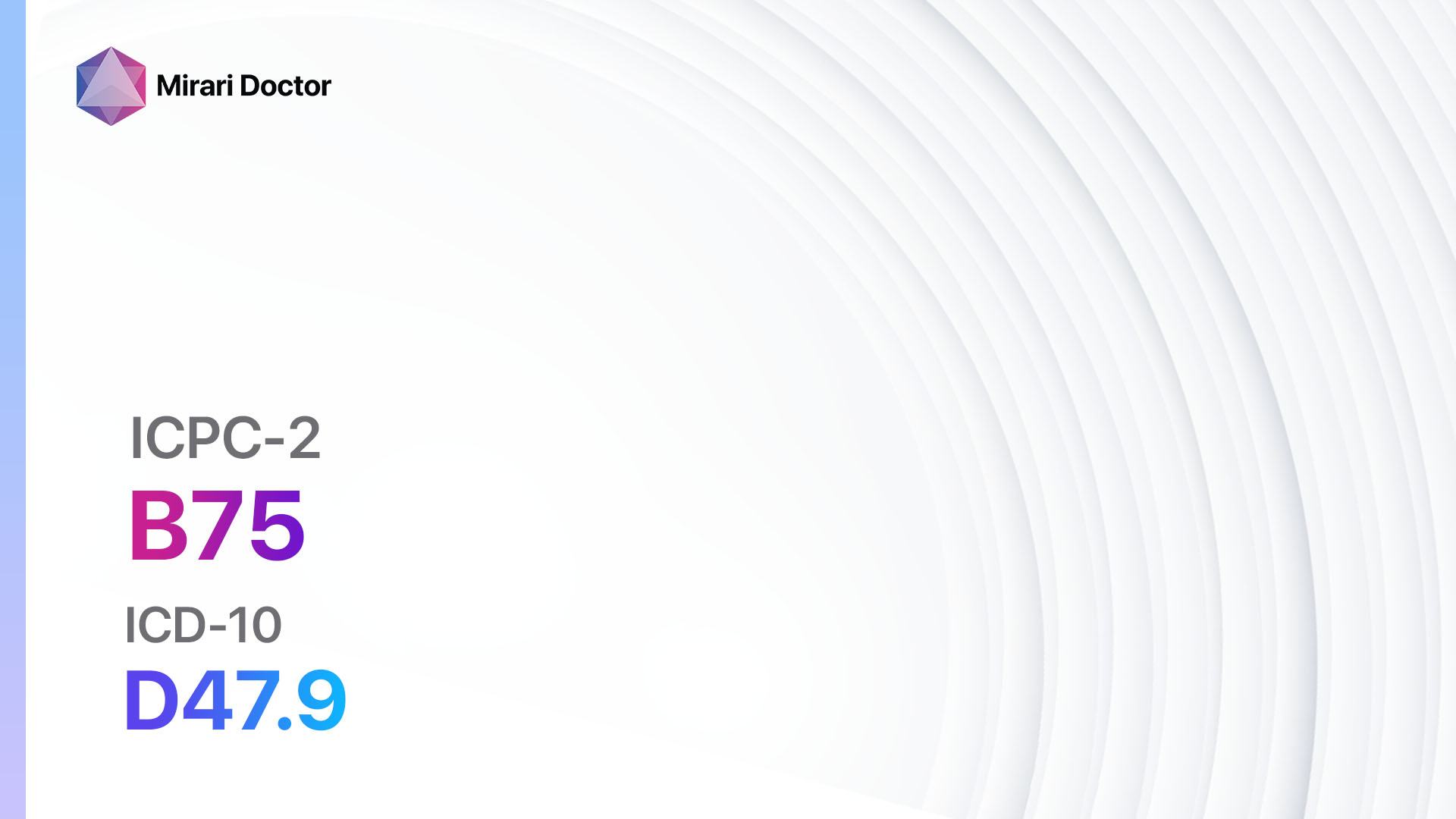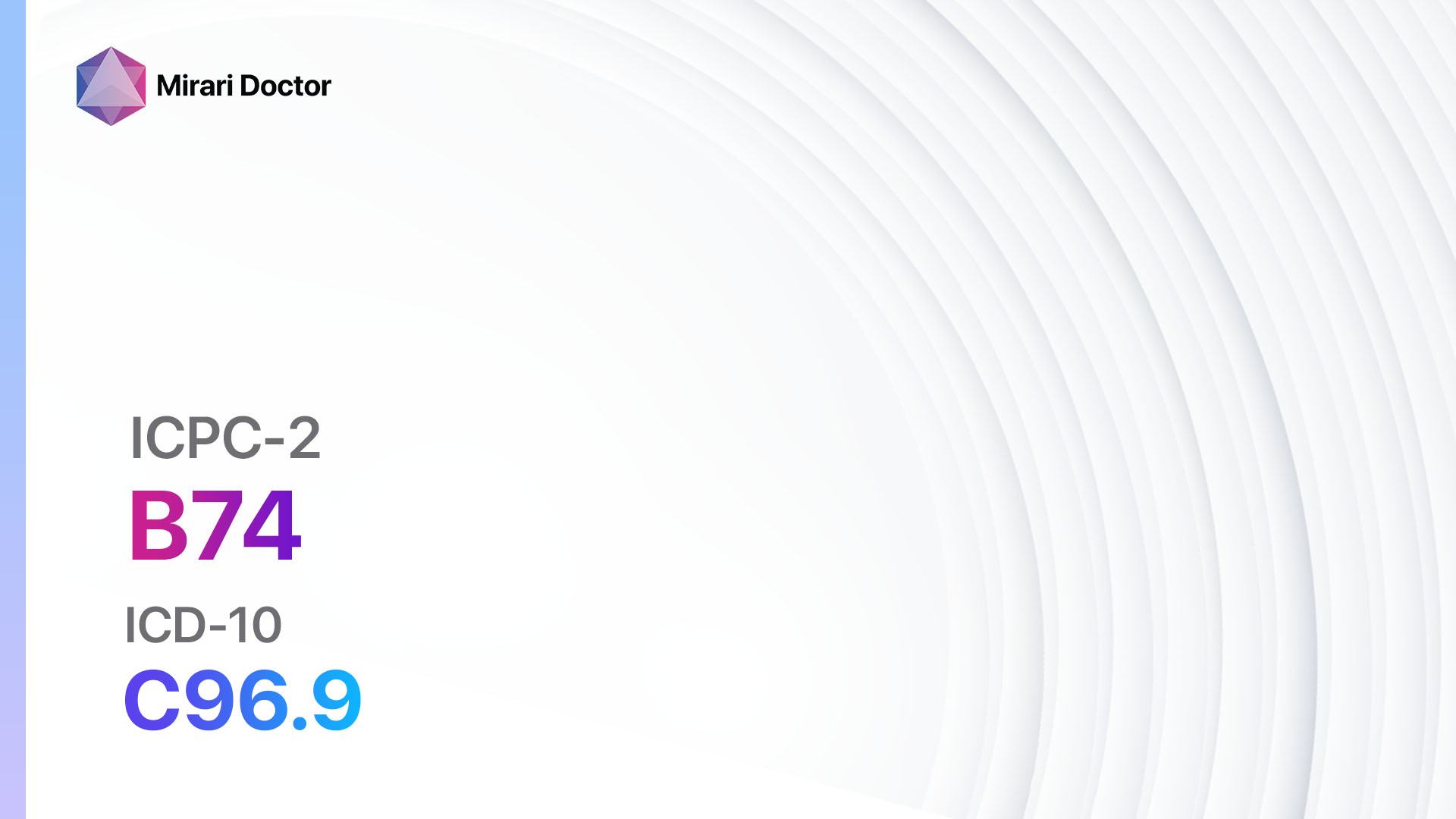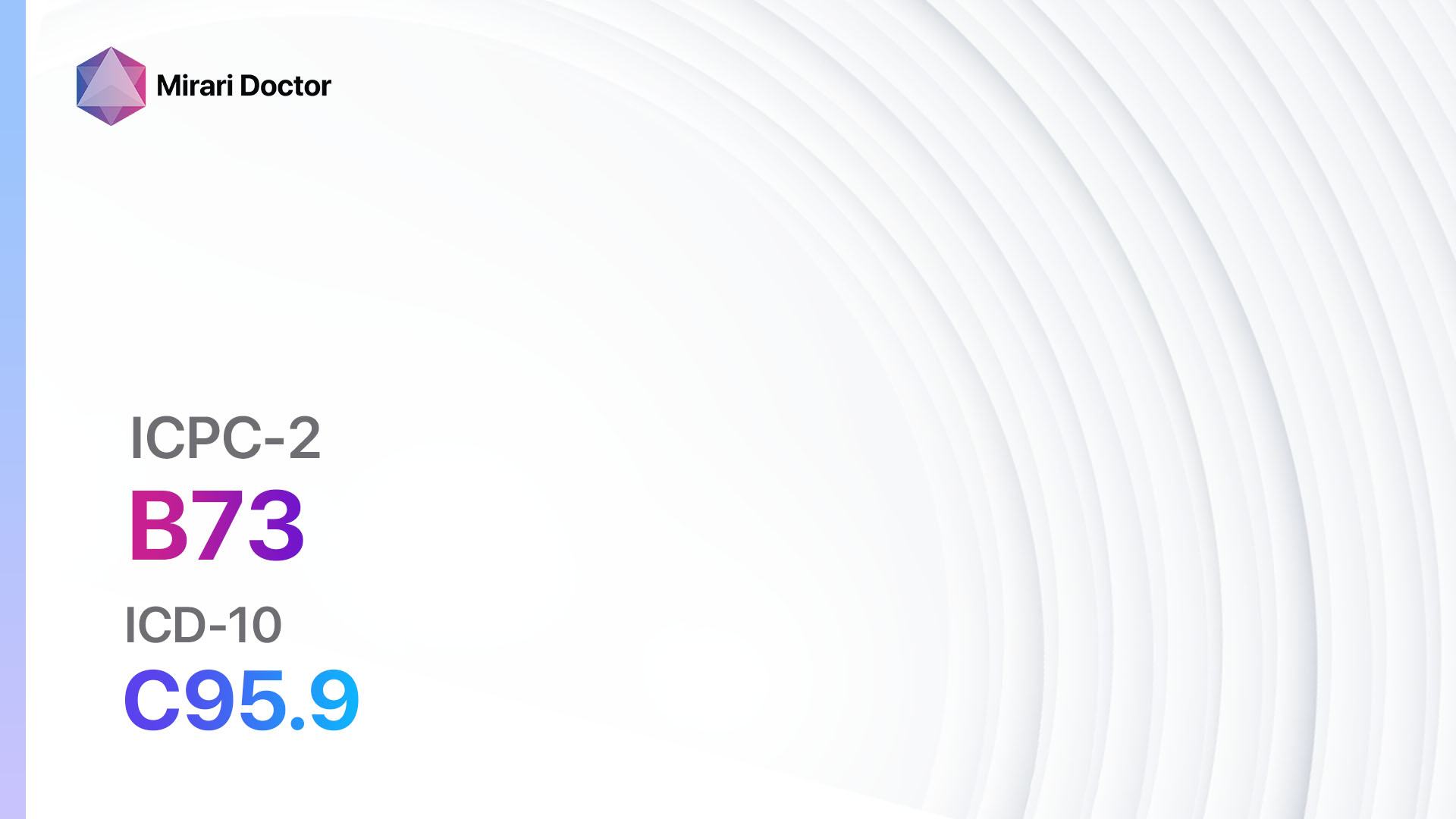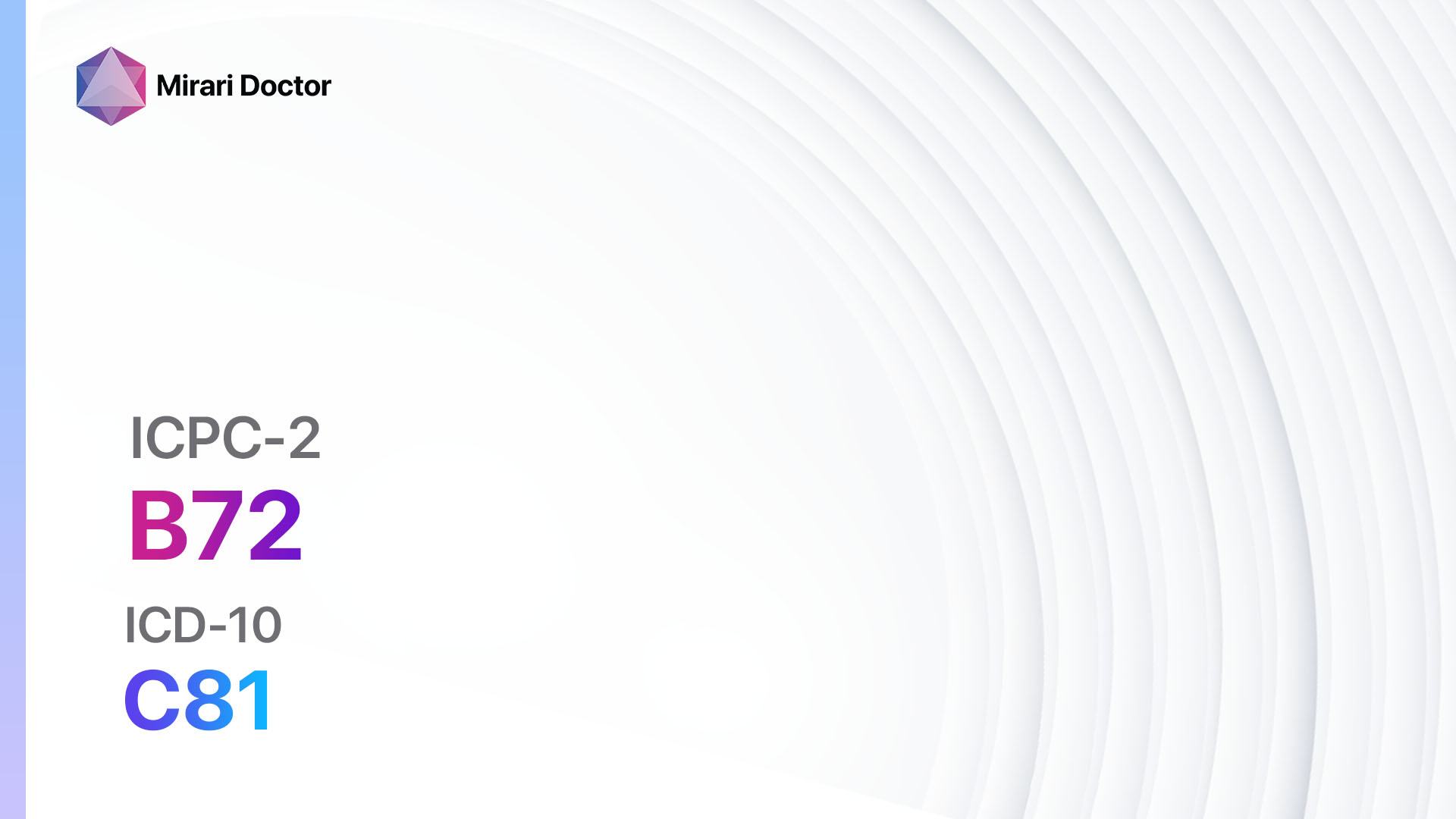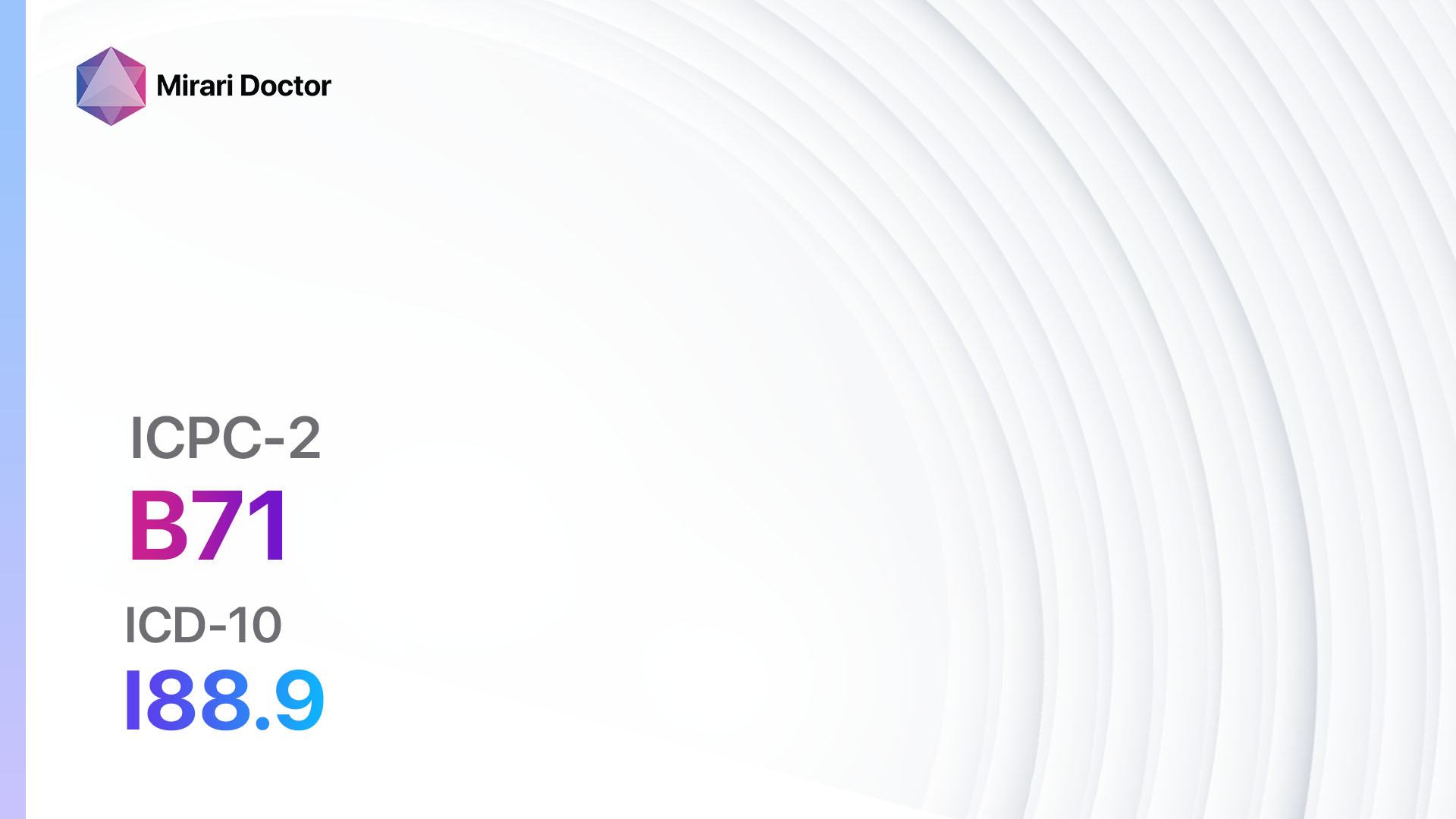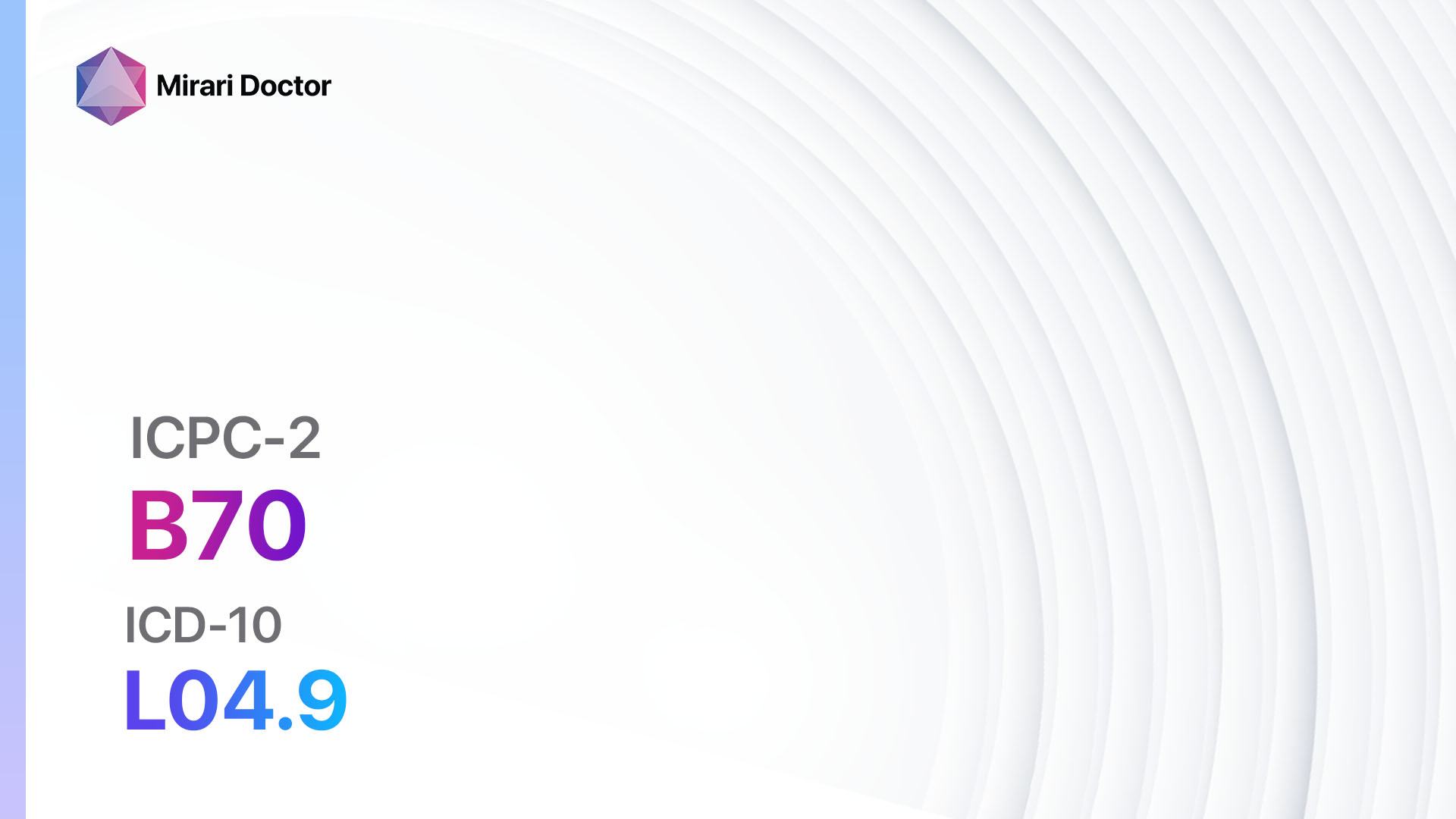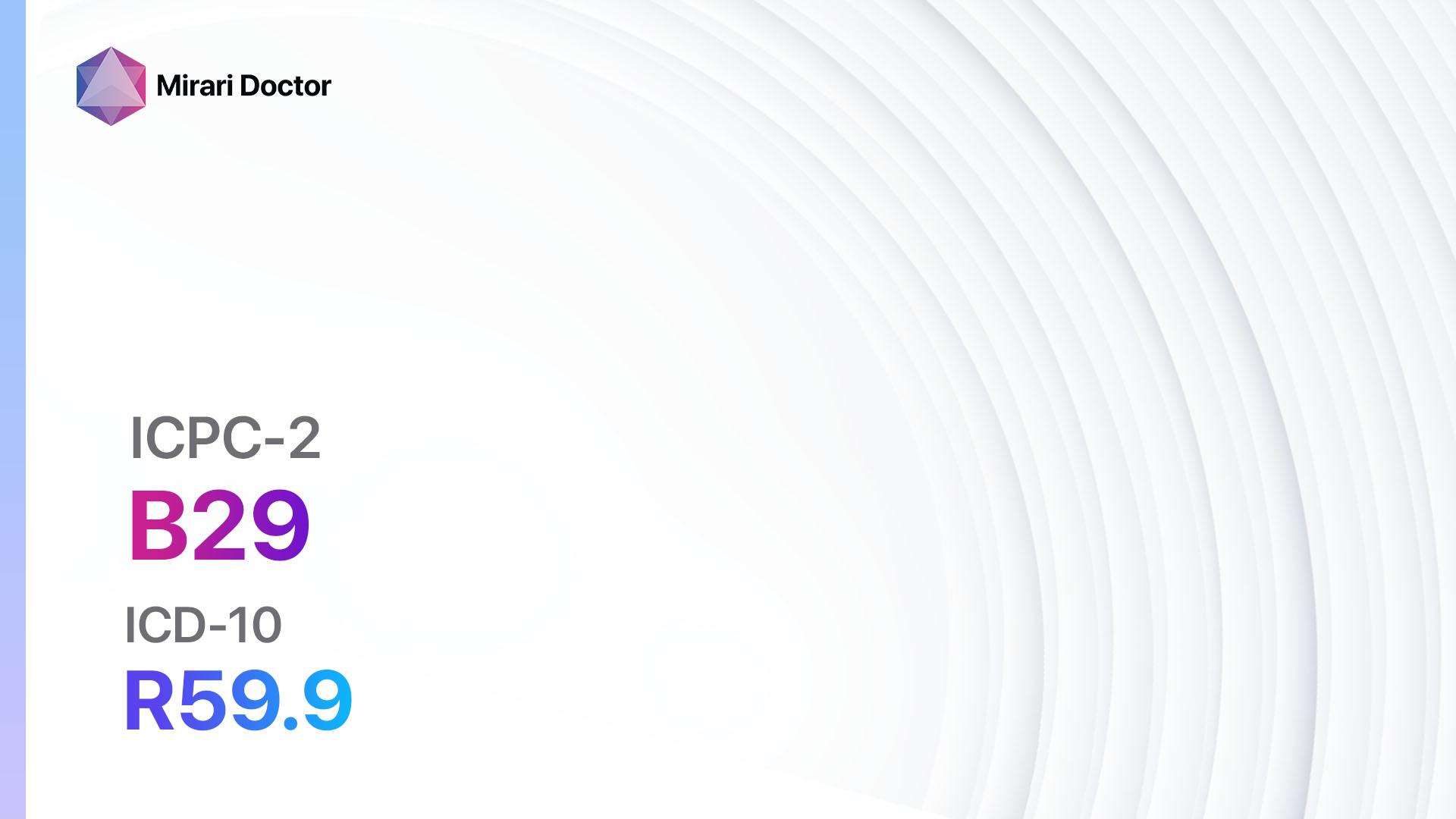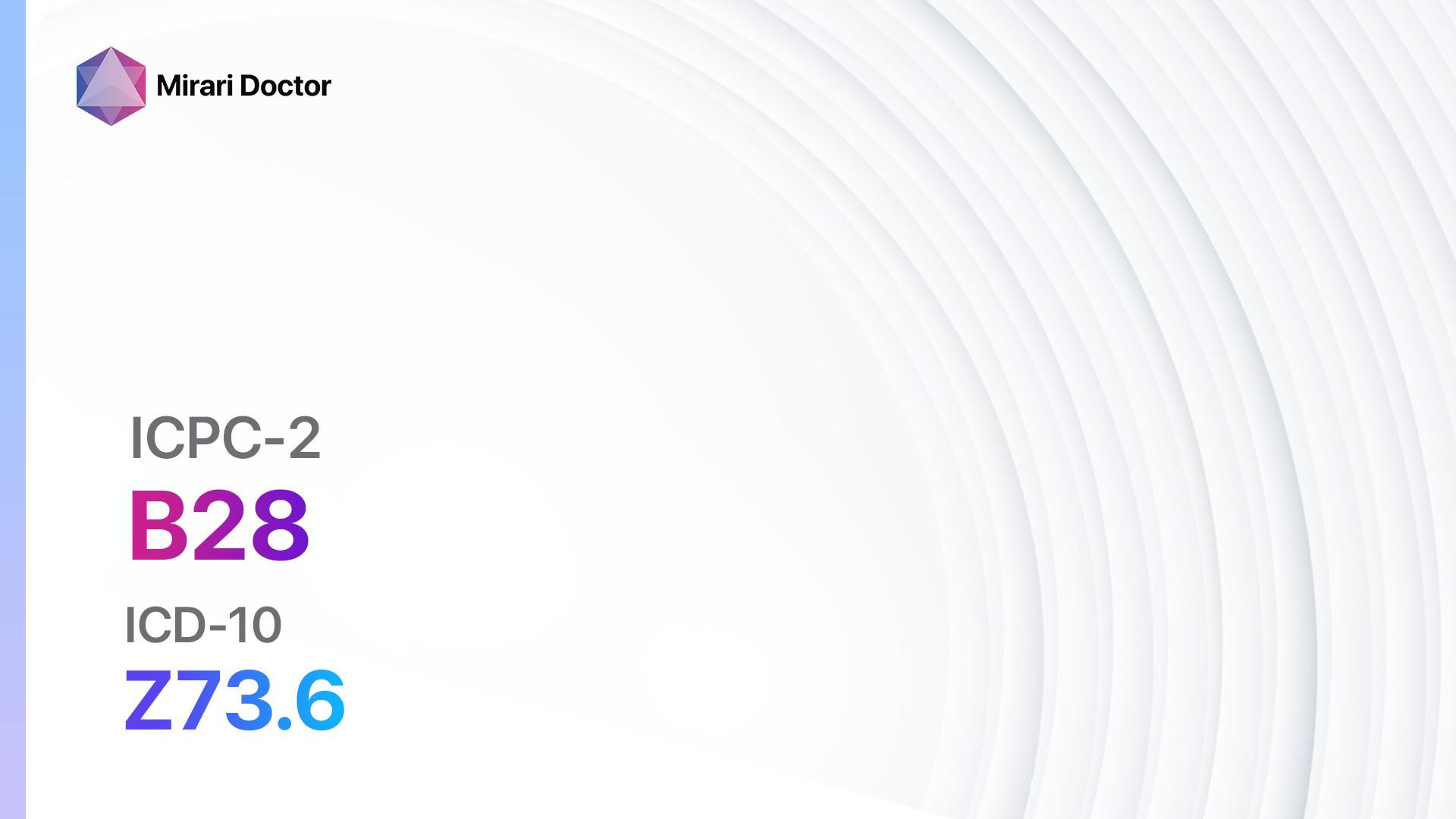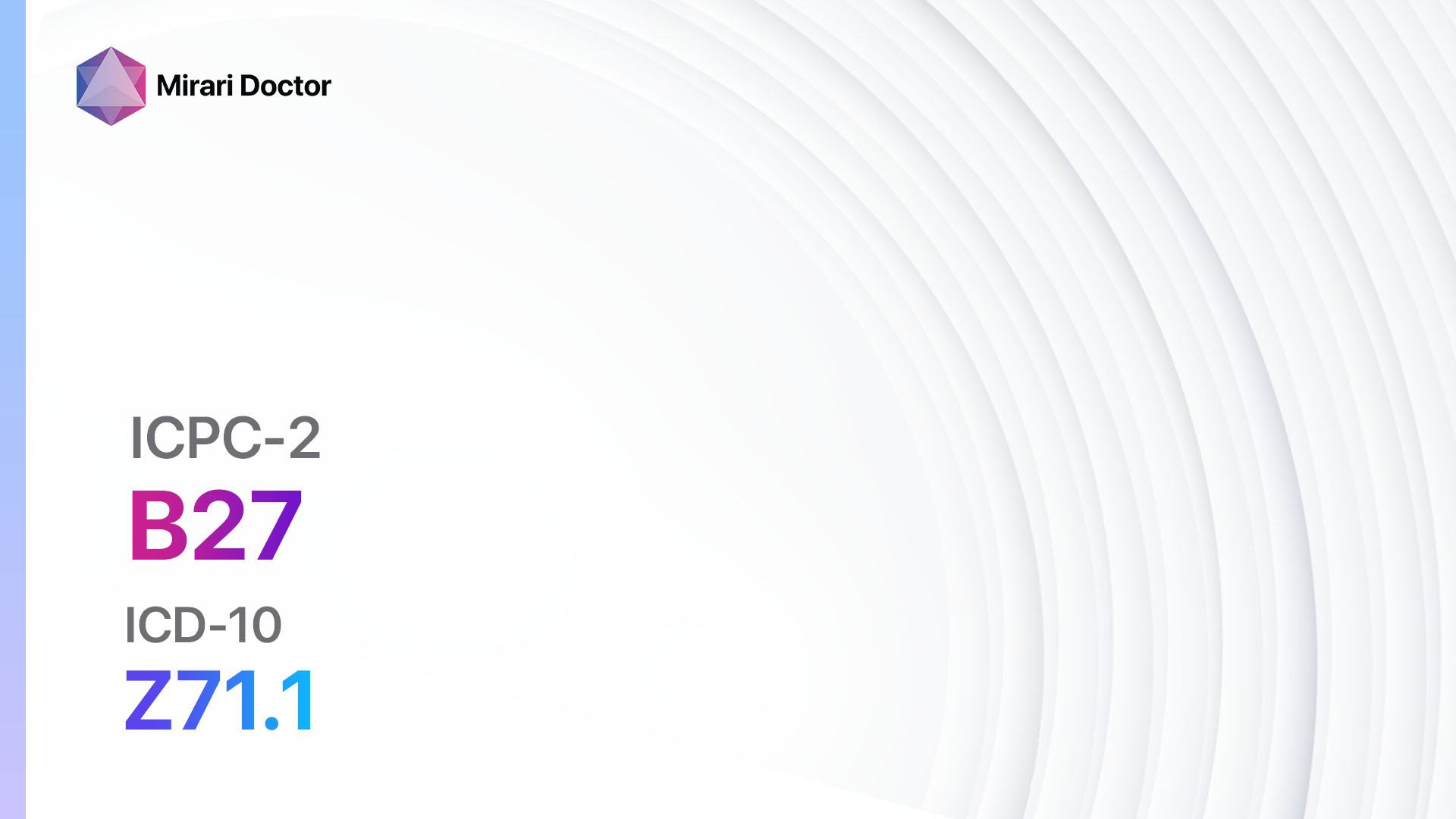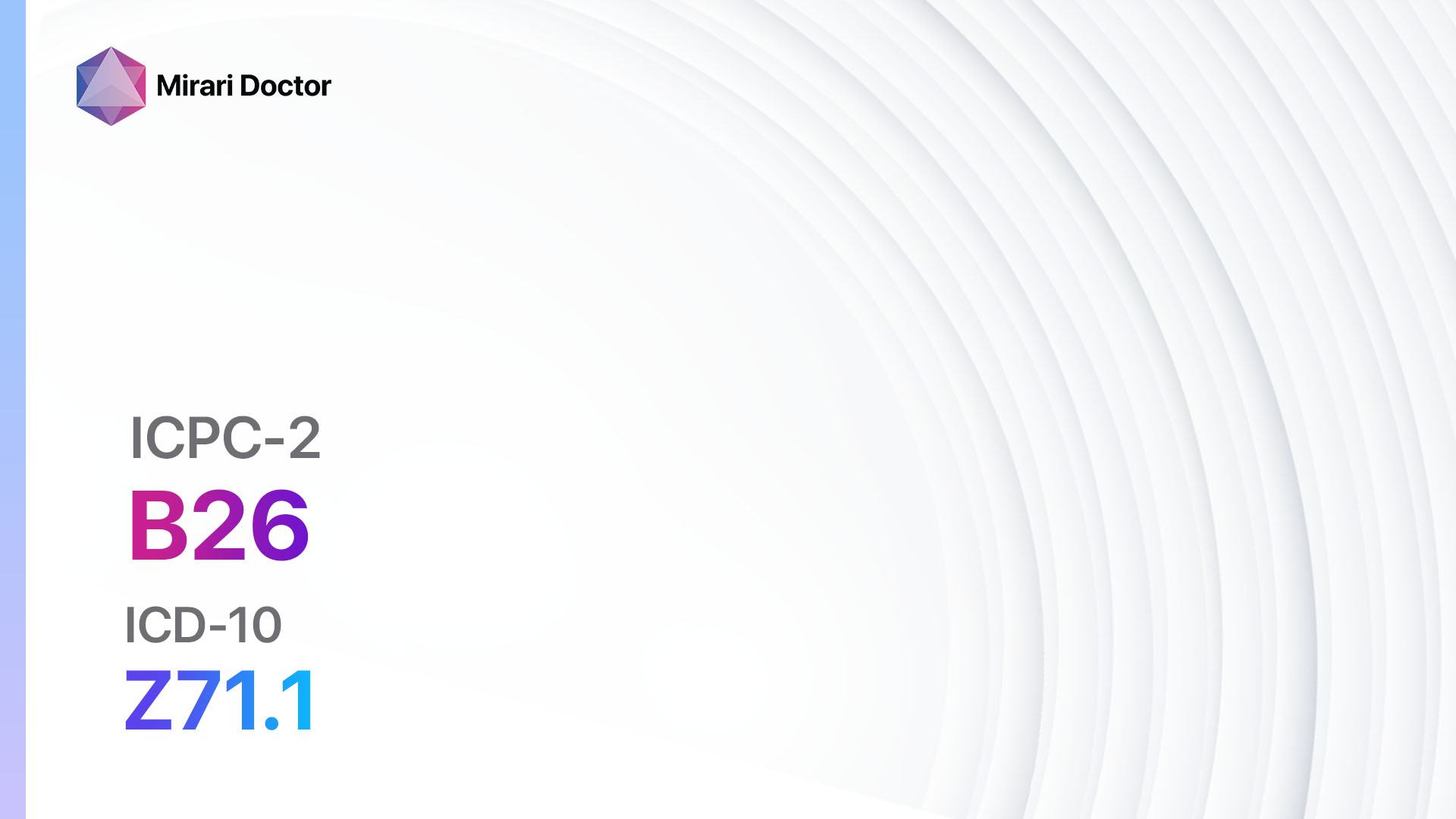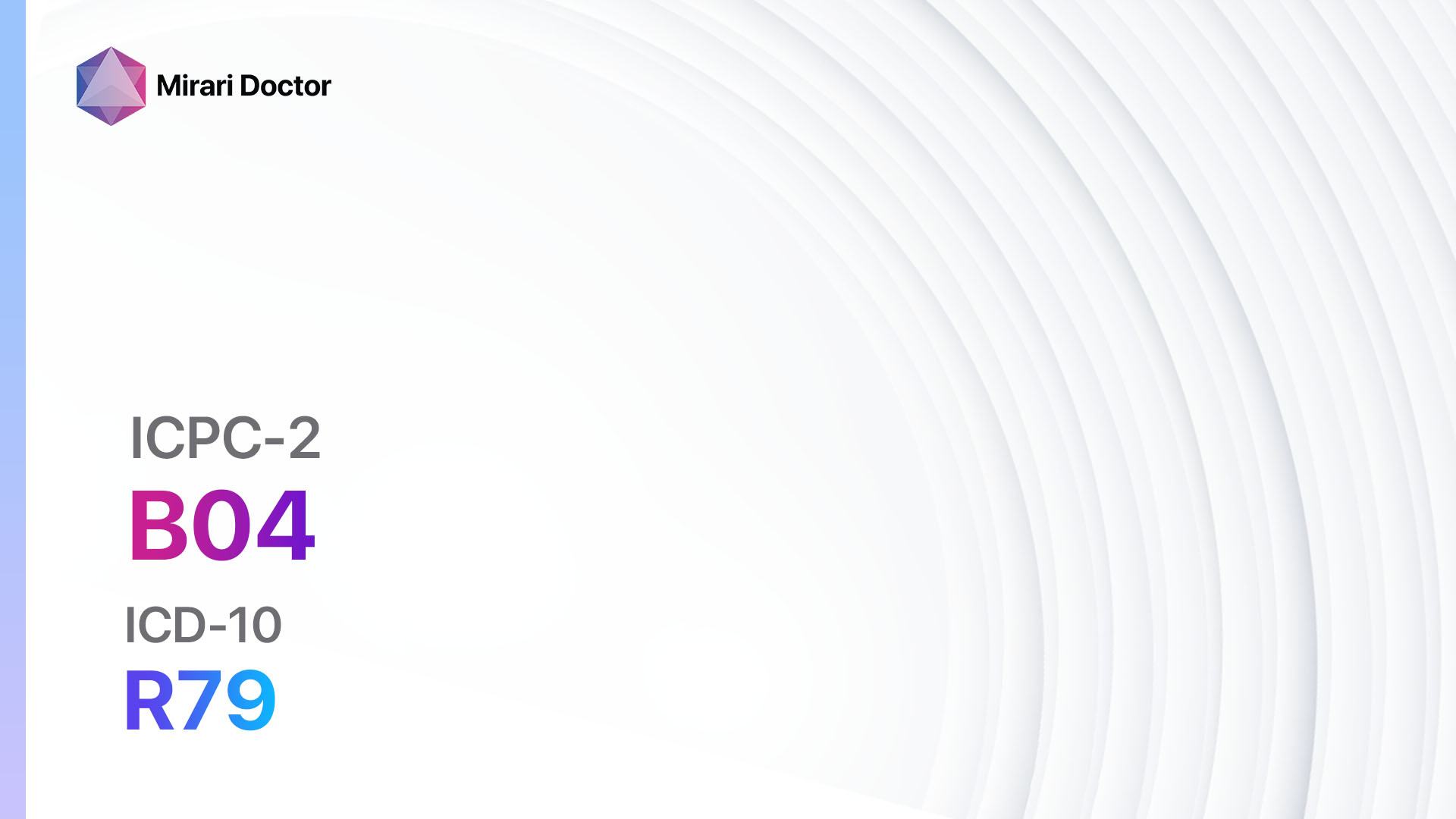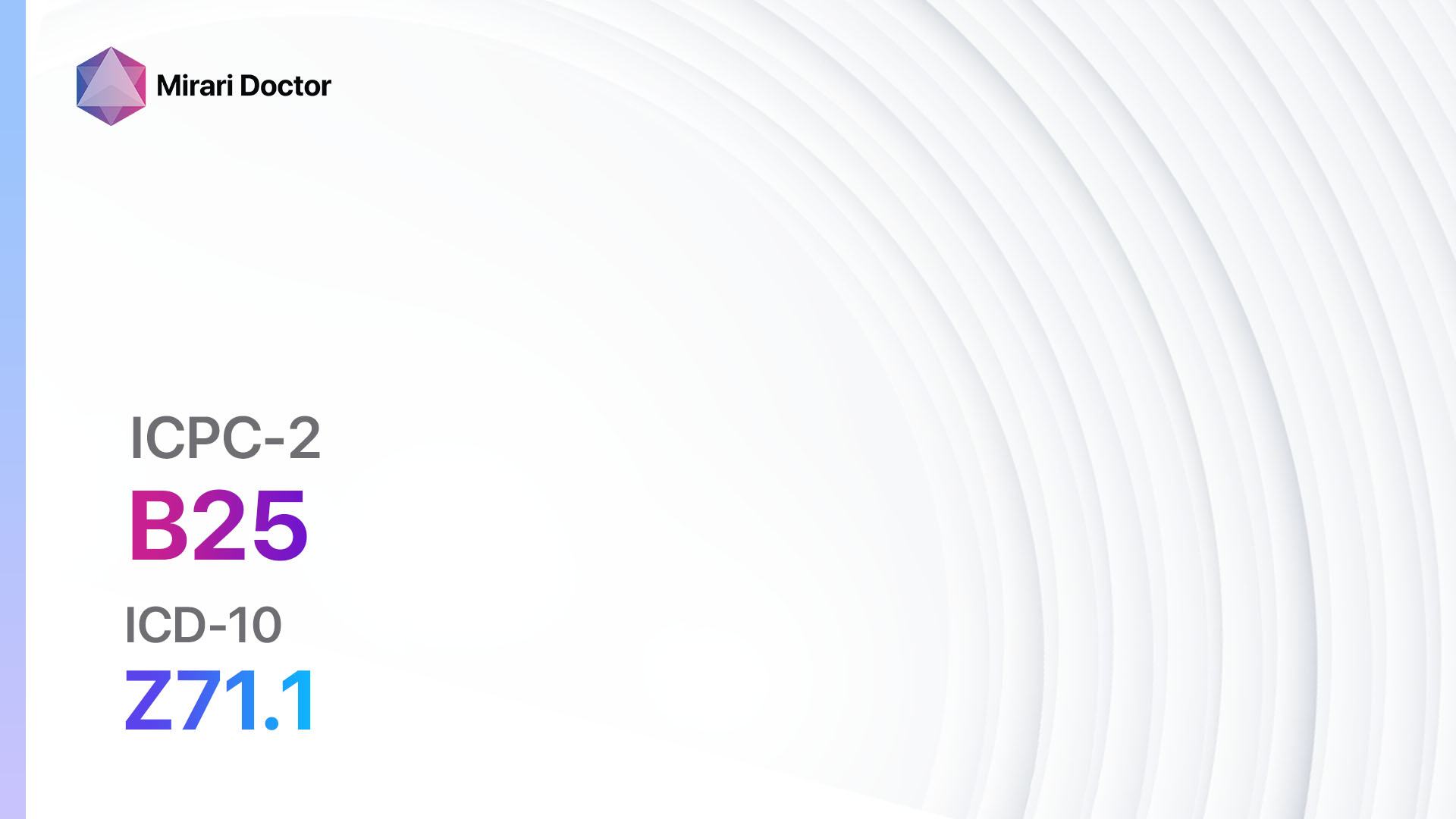
Introduction
Fear of AIDS/HIV is a psychological condition characterized by an excessive and irrational fear or anxiety related to the risk of acquiring AIDS or HIV[1]. This fear can significantly impact an individual’s daily life, relationships, and overall well-being[2]. The aim of this guide is to provide healthcare professionals with a comprehensive clinical procedural guide for diagnosing and managing fear of AIDS/HIV.
Codes
- ICPC-2 Code: B25 Fear of AIDS/HIV[3]
- ICD-10 Code: Z71.1 Person with feared complaint in whom no diagnosis is made[4]
Symptoms
- Excessive and persistent fear or anxiety related to the risk of acquiring AIDS or HIV[1]
- Avoidance of situations or activities that may increase the risk of exposure to AIDS or HIV[2]
- Preoccupation with thoughts or worries about AIDS or HIV[5]
- Physical symptoms of anxiety, such as rapid heartbeat, sweating, trembling, or shortness of breath[6]
- Impaired social or occupational functioning due to fear or anxiety[7]
Causes
- Previous traumatic experiences related to AIDS or HIV, such as knowing someone who has been diagnosed with the disease or experiencing a personal scare[8]
- Misinformation or lack of accurate knowledge about AIDS or HIV transmission and prevention[9]
- Underlying anxiety or phobia disorders[10]
- Cultural or societal factors that stigmatize or sensationalize AIDS or HIV
Diagnostic Steps
Medical History
- Conduct a comprehensive medical history to gather relevant patient information, including risk factors, medical conditions, and symptoms related to the fear of AIDS/HIV
- Assess the patient’s knowledge and understanding of AIDS/HIV transmission and prevention
- Inquire about any previous traumatic experiences or personal scares related to AIDS/HIV
Physical Examination
- Perform a thorough physical examination to rule out any physical causes for the fear or anxiety symptoms
- Pay attention to signs of anxiety, such as rapid heartbeat, sweating, or trembling
Laboratory Tests
- No specific laboratory tests are required for diagnosing fear of AIDS/HIV
- However, it may be helpful to conduct HIV testing to provide reassurance to the patient and address any concerns about potential exposure
Diagnostic Imaging
- No diagnostic imaging is necessary for diagnosing fear of AIDS/HIV
Other Tests
- No other specific tests are required for diagnosing fear of AIDS/HIV
- However, it may be beneficial to assess the patient’s mental health status through psychological evaluations or assessments
Follow-up and Patient Education
- Provide ongoing support and reassurance to the patient
- Offer education about AIDS/HIV transmission, prevention, and risk factors to address any misconceptions or fears
- Encourage the patient to seek counseling or therapy to address the underlying anxiety or phobia disorder
Possible Interventions
Traditional Interventions
Medications:
Top 5 drugs for Fear of AIDS/HIV:
- Selective Serotonin Reuptake Inhibitors (SSRIs) (e.g., Fluoxetine, Sertraline):
- Cost: Generic versions can be $3-$50/month.
- Contraindications: Hypersensitivity to SSRIs, concurrent use of MAO inhibitors.
- Side effects: Nausea, headache, insomnia.
- Severe side effects: Serotonin syndrome, suicidal thoughts.
- Drug interactions: MAO inhibitors, NSAIDs, other serotonergic drugs.
- Warning: May take several weeks to achieve full therapeutic effect.
- Benzodiazepines (e.g., Alprazolam, Lorazepam):
- Cost: Generic versions can be $4-$50/month.
- Contraindications: Acute narrow-angle glaucoma, concurrent use of opioids.
- Side effects: Drowsiness, dizziness, confusion.
- Severe side effects: Respiratory depression, dependence.
- Drug interactions: Opioids, alcohol, other CNS depressants.
- Warning: Risk of dependence and withdrawal symptoms with long-term use.
- Beta-blockers (e.g., Propranolol, Atenolol):
- Cost: Generic versions can be $4-$30/month.
- Contraindications: Severe bradycardia, heart block, uncontrolled heart failure.
- Side effects: Fatigue, dizziness, bradycardia.
- Severe side effects: Bronchospasm, heart block.
- Drug interactions: Calcium channel blockers, insulin.
- Warning: Should not be abruptly stopped.
- Antidepressants (e.g., Venlafaxine, Duloxetine):
- Cost: Generic versions can be $4-$50/month.
- Contraindications: Hypersensitivity to antidepressants, concurrent use of MAO inhibitors.
- Side effects: Nausea, headache, insomnia.
- Severe side effects: Serotonin syndrome, suicidal thoughts.
- Drug interactions: MAO inhibitors, NSAIDs, other serotonergic drugs.
- Warning: May take several weeks to achieve full therapeutic effect.
- Antipsychotics (e.g., Quetiapine, Risperidone):
- Cost: Generic versions can be $4-$50/month.
- Contraindications: Hypersensitivity to antipsychotics, concurrent use of QT-prolonging drugs.
- Side effects: Sedation, weight gain, extrapyramidal symptoms.
- Severe side effects: Neuroleptic malignant syndrome, tardive dyskinesia.
- Drug interactions: QT-prolonging drugs, CNS depressants.
- Warning: Increased risk of mortality in elderly patients with dementia-related psychosis.
Alternative Drugs:
- Cognitive Behavioral Therapy (CBT): A form of psychotherapy that helps individuals identify and change negative thought patterns and behaviors associated with fear of AIDS/HIV. Cost: Varies depending on the therapist and location.
- Exposure Therapy: A type of therapy that gradually exposes individuals to feared situations or objects related to AIDS/HIV to reduce anxiety and fear. Cost: Varies depending on the therapist and location.
- Group Therapy: A therapeutic approach that involves participating in a group setting with individuals who share similar fears or anxieties related to AIDS/HIV. Cost: Varies depending on the therapist and location.
- Mindfulness-Based Stress Reduction (MBSR): A program that combines mindfulness meditation, body awareness, and yoga to help individuals manage stress and anxiety. Cost: Varies depending on the instructor and location.
- Support Groups: Joining a support group specifically for individuals with fear of AIDS/HIV can provide a sense of community and understanding. Cost: Varies depending on the organization and location.
Lifestyle Interventions
- Stress Management: Techniques such as deep breathing, meditation, or mindfulness can help reduce stress and anxiety related to fear of AIDS/HIV. Cost: Varies depending on the specific practice.
- Education and Information: Providing accurate and up-to-date information about AIDS/HIV transmission, prevention, and risk factors can help alleviate fears and anxieties. Cost: Varies depending on the resources used.
- Supportive Relationships: Encouraging the patient to seek support from friends, family, or support groups can provide emotional support and reassurance. Cost: Varies depending on the individual’s social network.
- Healthy Lifestyle: Promoting a healthy lifestyle through regular exercise, balanced diet, and adequate sleep can help improve overall well-being and reduce anxiety. Cost: Varies depending on individual preferences and choices.
It is important to note that the cost ranges provided are approximate and may vary depending on the location and availability of the interventions.
Mirari Cold Plasma Alternative Intervention
Understanding Mirari Cold Plasma
- Safe and Non-Invasive Treatment: Mirari Cold Plasma is a safe and non-invasive treatment option for various skin conditions. It does not require incisions, minimizing the risk of scarring, bleeding, or tissue damage.
- Efficient Extraction of Foreign Bodies: Mirari Cold Plasma facilitates the removal of foreign bodies from the skin by degrading and dissociating organic matter, allowing easier access and extraction.
- Pain Reduction and Comfort: Mirari Cold Plasma has a local analgesic effect, providing pain relief during the treatment, making it more comfortable for the patient.
- Reduced Risk of Infection: Mirari Cold Plasma has antimicrobial properties, effectively killing bacteria and reducing the risk of infection.
- Accelerated Healing and Minimal Scarring: Mirari Cold Plasma stimulates wound healing and tissue regeneration, reducing healing time and minimizing the formation of scars.
Mirari Cold Plasma Prescription
Video instructions for using Mirari Cold Plasma Device – B25 Fear of AIDS/HIV (ICD-10:Z71.1)
| Mild | Moderate | Severe |
| Mode setting: 7 (Immunotherapy) Location: 1 (Sacrum) Morning: 15 minutes, Evening: 15 minutes |
Mode setting: 7 (Immunotherapy) Location: 1 (Sacrum) Morning: 30 minutes, Lunch: 30 minutes, Evening: 30 minutes |
Mode setting: 7 (Immunotherapy) Location: 1 (Sacrum) Morning: 30 minutes, Lunch: 30 minutes, Evening: 30 minutes |
| Mode setting: 7 (Immunotherapy) Location: 4 (Heart, Bile & Pancreas) Morning: 15 minutes, Evening: 15 minutes |
Mode setting: 7 (Immunotherapy) Location: 4 (Heart, Bile & Pancreas) Morning: 30 minutes, Lunch: 30 minutes, Evening: 30 minutes |
Mode setting: 7 (Immunotherapy) Location: 4 (Heart, Bile & Pancreas) Morning: 30 minutes, Lunch: 30 minutes, Evening: 30 minutes |
| Mode setting: 7 (Immunotherapy) Location: 7 (Neuro system & ENT) Morning: 15 minutes, Evening: 15 minutes |
Mode setting: 7 (Immunotherapy) Location: 7 (Neuro system & ENT) Morning: 30 minutes, Lunch: 30 minutes, Evening: 30 minutes |
Mode setting: 7 (Immunotherapy) Location: 7 (Neuro system & ENT) Morning: 30 minutes, Lunch: 30 minutes, Evening: 30 minutes |
| Total Morning: 45 minutes approx. $7.50 USD, Evening: 45 minutes approx. $7.50 USD |
Total Morning: 90 minutes approx. $15 USD, Lunch: 90 minutes approx. $15 USD, Evening: 90 minutes approx. $15 USD |
Total Morning: 90 minutes approx. $15 USD, Lunch: 90 minutes approx. $15 USD, Evening: 90 minutes approx. $15 USD |
| Usual treatment for 7-60 days approx. $105 USD – $900 USD | Usual treatment for 6-8 weeks approx. $1,890 USD – $2,520 USD |
Usual treatment for 3-6 months approx. $4,050 USD – $8,100 USD
|
 |
|
Use the Mirari Cold Plasma device to treat Fear of aids/HIV effectively.
WARNING: MIRARI COLD PLASMA IS DESIGNED FOR THE HUMAN BODY WITHOUT ANY ARTIFICIAL OR THIRD PARTY PRODUCTS. USE OF OTHER PRODUCTS IN COMBINATION WITH MIRARI COLD PLASMA MAY CAUSE UNPREDICTABLE EFFECTS, HARM OR INJURY. PLEASE CONSULT A MEDICAL PROFESSIONAL BEFORE COMBINING ANY OTHER PRODUCTS WITH USE OF MIRARI.
Step 1: Cleanse the Skin
- Start by cleaning the affected area of the skin with a gentle cleanser or mild soap and water. Gently pat the area dry with a clean towel.
Step 2: Prepare the Mirari Cold Plasma device
- Ensure that the Mirari Cold Plasma device is fully charged or has fresh batteries as per the manufacturer’s instructions. Make sure the device is clean and in good working condition.
- Switch on the Mirari device using the power button or by following the specific instructions provided with the device.
- Some Mirari devices may have adjustable settings for intensity or treatment duration. Follow the manufacturer’s instructions to select the appropriate settings based on your needs and the recommended guidelines.
Step 3: Apply the Device
- Place the Mirari device in direct contact with the affected area of the skin. Gently glide or hold the device over the skin surface, ensuring even coverage of the area experiencing.
- Slowly move the Mirari device in a circular motion or follow a specific pattern as indicated in the user manual. This helps ensure thorough treatment coverage.
Step 4: Monitor and Assess:
- Keep track of your progress and evaluate the effectiveness of the Mirari device in managing your Fear of aids/HIV. If you have any concerns or notice any adverse reactions, consult with your health care professional.
Note
This guide is for informational purposes only and should not replace the advice of a medical professional. Always consult with your healthcare provider or a qualified medical professional for personal advice, diagnosis, or treatment. Do not solely rely on the information presented here for decisions about your health. Use of this information is at your own risk. The authors of this guide, nor any associated entities or platforms, are not responsible for any potential adverse effects or outcomes based on the content.
Mirari Cold Plasma System Disclaimer
- Purpose: The Mirari Cold Plasma System is a Class 2 medical device designed for use by trained healthcare professionals. It is registered for use in Thailand and Vietnam. It is not intended for use outside of these locations.
- Informational Use: The content and information provided with the device are for educational and informational purposes only. They are not a substitute for professional medical advice or care.
- Variable Outcomes: While the device is approved for specific uses, individual outcomes can differ. We do not assert or guarantee specific medical outcomes.
- Consultation: Prior to utilizing the device or making decisions based on its content, it is essential to consult with a Certified Mirari Tele-Therapist and your medical healthcare provider regarding specific protocols.
- Liability: By using this device, users are acknowledging and accepting all potential risks. Neither the manufacturer nor the distributor will be held accountable for any adverse reactions, injuries, or damages stemming from its use.
- Geographical Availability: This device has received approval for designated purposes by the Thai and Vietnam FDA. As of now, outside of Thailand and Vietnam, the Mirari Cold Plasma System is not available for purchase or use.
References
- Rymland, E. (n.d.). How to Identify and Overcome HIV Phobia: 10 FAQs. Healthline. https://www.healthline.com/health/hiv-phobia
- Gluckman, K. (n.d.). HIV: Getting Past the Fear. WebMD. https://www.webmd.com/hiv-aids/features/hiv-getting-past-fear
- International Classification of Primary Care. (n.d.). PH3C. http://www.ph3c.org/PH3C/docs/27/000496/0000908.pdf
- 2024 ICD-10-CM Diagnosis Code Z71.1. (n.d.). ICD10Data.com. https://www.icd10data.com/ICD10CM/Codes/Z00-Z99/Z69-Z76/Z71-/Z71.1
- Parekh, B. S. (2018). Diagnosis of Human Immunodeficiency Virus Infection. PMC. https://www.ncbi.nlm.nih.gov/pmc/articles/PMC6302353/
- Coping with HIV: Fear and Anxiety. (n.d.). HIV.va.gov. https://www.hiv.va.gov/patient/daily/mental/anxiety.asp
- Singer, E. J. (2021). Neurobehavioral Manifestations of HIV/AIDS: Diagnosis and Treatment. PMC. https://www.ncbi.nlm.nih.gov/pmc/articles/PMC4663681/
- Falvo, D. R., & Tippy, P. K. (1988). Fear of AIDS: the impact of public anxiety in young people. PubMed. https://pubmed.ncbi.nlm.nih.gov/3256384/
- Maia, A. C., & Struchiner, C. J. (1997). Between the fear of HIV contamination and the symbolic representation of AIDS: the impact of public anxiety in young people. PubMed. https://pubmed.ncbi.nlm.nih.gov/9016156/
- Pantalone, D. (n.d.). What Is HIV Phobia? TheBody. https://www.thebody.com/article/hiv-aids-phobia
Related articles
Made in USA


